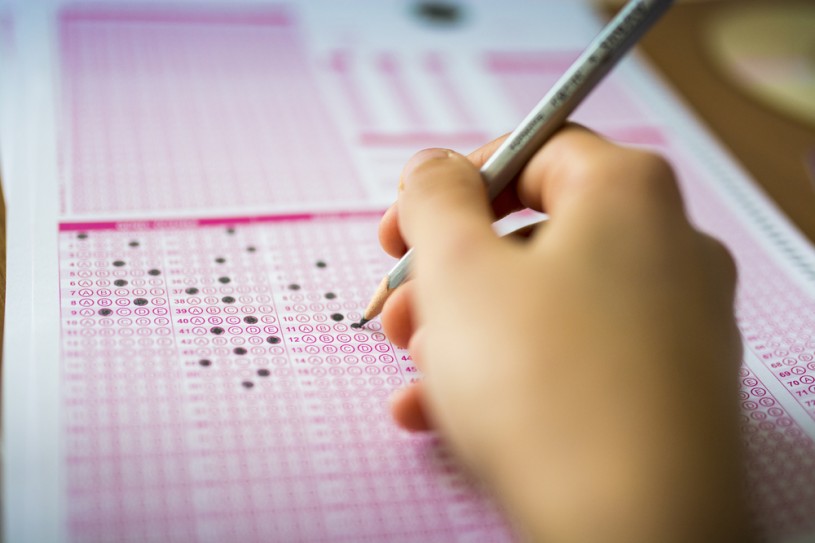
(Photo: Shutterstock)
One of the “hard truths” described by FBI Director James Comey in his now viral Georgetown University speech about race had to do with the “disproportionate challenges faced by young men of color.” Recruiting and training police better to avoid racial bias or “mental shortcuts” that they adopt — often unintentionally — when policing minority neighborhoods won’t be enough, he said.
One problem is path dependency: “Those neighborhoods,” he pointed out, drawing upon federal data, “too often inherit a legacy of crime and prison.” The other is that “so many minority families and communities are struggling, so many boys and young men grow up in environments lacking role models, adequate education and decent employment.” This challenge is significantly harder than simply changing police attitudes because this hard truth means that we have to address the environment in which crime takes place.
Wouldn’t it be great if someone in the federal government made a clarion call like this about the environment in which public education takes place?
The problems are familiar and generally well-documented. According to the Council of Great City Schools, only 13 percent of African-American eighth-graders and 16 percent of Latino eighth-graders meet the minimum standards of proficiency on the reading portion of the National Assessment of Educational Progress, compared with 39 percent of their white eighth-grade peers.
Imagine a discussion about education in America that begins with the communities where these children come from, and considers the effects of such tests on students. Instead of targeting teachers for lagging student achievement and using data dumps from for-profit testing companies, we would connect and equip classrooms, homes and neighborhoods as inspired, integrated learning environments.
This would mean fully funding Head Start and early childhood development, and probably doing some big rethinking about the structure and goals of secondary education (I nominate Matthew Crawford, author of Shop Class as Soulcraft, for the commission). It would also mean replacing some standardized testing with tools and time for teachers to teach students with different needs, interests and skills.
“Yes, we need better schools,” writes Darlene Leiding in Winds of Change: Declaring War on Education, but “the achievement gap starts at birth.” High-stakes testing drives good teachers and principals away, it has led to huge cheating scandals (among teachers and administrators!) and ultimately “it holds people accountable for factors over which they have little or no control.”
The testing industry has responded with statistical algorithms that attempt to weight environmental factors, track student progress and then assess teachers based on anticipated, predicted progress. That’s a defensible statistical technique, and one that I’ve used to study corruption in the developing world, but it requires lots of data points. And this means more tests for your 6-year-old.
Summarizing some of the academic research on these “value added” measurement techniques in his new book, Fear and Learning in America, John Kuhn points out that they do not just assess teachers on how well they teach; they end up rewarding and punishing teachers based on whom they teach.
I have taught students at three different universities over the last decade, so the students I teach have already survived the SAT, the ACT and Common Core. I worry, though, not just about the achievement gap for those who do and do not make it into college, but also about a gap between students’ learning experience in secondary school and their college encounter.
While high schools keep piling on more tests, higher education is substituting practice for term papers, integrating Twitter into classrooms, and sending students abroad like never before to discover knowledge and become passionate about experiential learning; the number of U.S. students spending a summer or a semester overseas has tripled over the last two decades, according to the Institute for International Education.
Last semester, I asked Jeff Selingo, author of the bestselling College (Un)Bound: The Future of Higher Education and What It Means for Students, what happens to the student who arrives in college having come to equate learning with filling out bubbles on a test sheet, or who sees teachers as bland authority figures?
William Butler Yeats was on my mind, since he said, “Education is not the filling of a pail, but the lighting of a fire.” Unfortunately, Selingo said, it’s going to be up to us college professors to fix the gap between testing in high school and learning in college, and he’s probably right. We are going to have to show students how to enjoy learning again, and to associate knowledge with passion.
The popular image of the school reform movement was a broom, a metaphor for cleaning up schools systems. I worry, though, that it is looking more and more like a pail. So when we set out to fix the achievement gap, let’s also try to address any emerging gaps between testing and learning.
